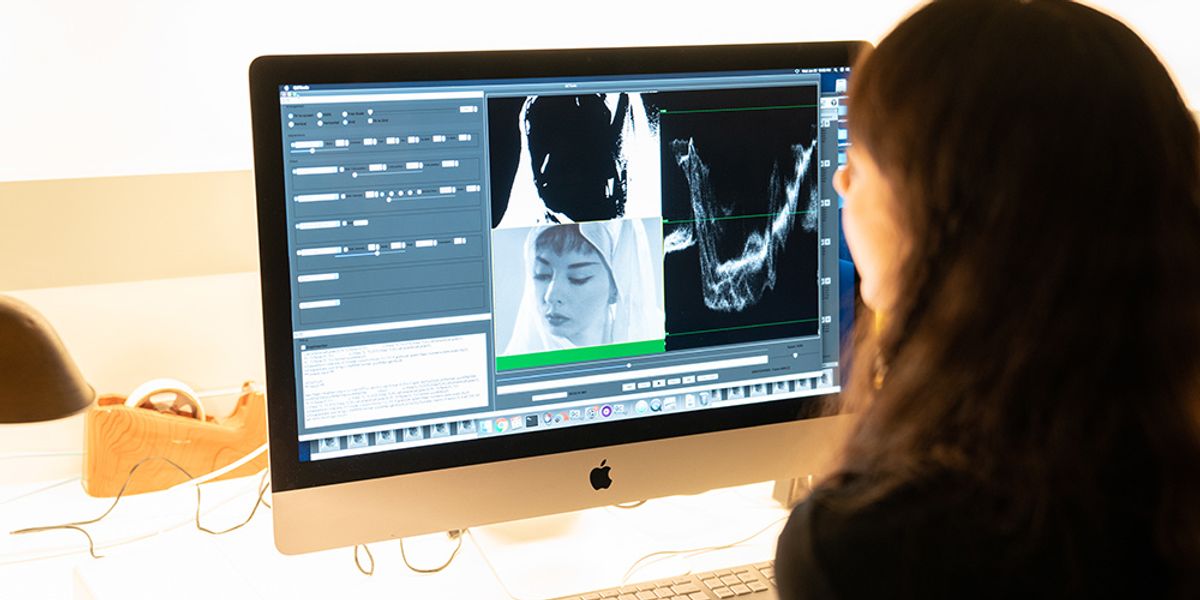What Archivists Want You To Know About Preserving Your Records
Maybe it’s because dancers tend to have good memories, sharpened by years of retaining complex choreography. Perhaps it’s because performing demands we surrender fully to the present moment. Whatever the reason, dance artists often don’t start organizing and preserving their records until late in their careers or after retirement—if at all.
Archiving sounds complicated, many assume it’s expensive, and some wonder whether their work is even worth saving. None of that has to be true, says Norton Owen, director of preservation at Jacob’s Pillow. “José Limón’s memoir began with a legal pad and a pencil,” he says. For decades, Eiko and Koma kept an old film reel, despite not knowing what was on it—which is why we have digitized footage of one of their earliest performances.
“There are a lot of ways people can get started with the resources available to them,” says Owen. Smartphones and cloud storage seem like the most obvious resources of all, but they lure many into a false sense of security. “Google is a private company. There is always the risk that, one day, they could say ‘Sorry, but we’re not supporting Gmail anymore. You’re on your own,’ ” says Alison Hinderliter, Lloyd Lewis curator of modern manuscripts and archives at the Newberry research library in Chicago.
“Particularly since the digital age began, it’s become so important for artists to be reflective about their archives at an early age,” says Linda Murray, curator of the Jerome Robbins Dance Division at the New York Public Library for the Performing Arts. Here are a few ways you can get started today.
Prioritize what’s unique.
“Yes, newspaper clippings and reviews are important, but those are also easily found in the public sphere,” says Hinderliter. Your original notes, sketches and internal documents will be most valuable to historians and scholars.
Nix the office supplies that don’t age well.
Paperclips can damage documents over time, photos especially. Ditto Scotch tape. Post-it notes lose their adhesive and fall off. Simple folders and boxes—ideally acid-free—are your best friends.
Don’t over-organize, but do label.
Hinderliter says many artists have a common misconception that their collections need to be impeccably organized before the materials come to the archive. “Every time you have something printed, put a copy in a box, and start a new box for every year. That’s sufficient.” As you’re filing, stick a label on each box, adds Murray. “I guarantee you won’t remember what you put in the box.”
Keep copies. Separate.
“Two and one” is the archival standard that means you keep two copies you don’t touch in two different places, and use a third “access copy” for reference and to make additional copies. If that’s beyond your budget and capacity, start with “one and one.” “It’s so common that someone from marketing looks through photos and instead of making a copy, just crops and makes edits to the original, which then gets lost,” says Imogen Smith, director of archiving and preservation at Dance/USA.
Get into the cloud, but stay down-to-earth.
Any digital file saved using a cloud-storage service like Dropbox or Google Drive should also exist on at least one external hard drive. Download, rename and save important documents, attachments and emails.
Handle videotape with care.
Keep VHS and other magnetic tape formats in the coldest, driest room you have— and away from sunlight, televisions, radiators and electronic equipment—to guard against mold and what’s called “sticky-shed syndrome.” Murray recommends not trying to play tapes yourself at all. If you digitize your own tapes, hold on to the originals or donate them right away to the organization where your archives will live. There is always data loss and compression when transferring from one format to another, explains Owen.
Ask questions.
Archivists and librarians are genuinely happy to help. A wealth of resources is available for free in Dance/USA’s Artist’s Legacy Toolkit. If there’s a local performing arts library or archive in your area, go introduce yourself.




